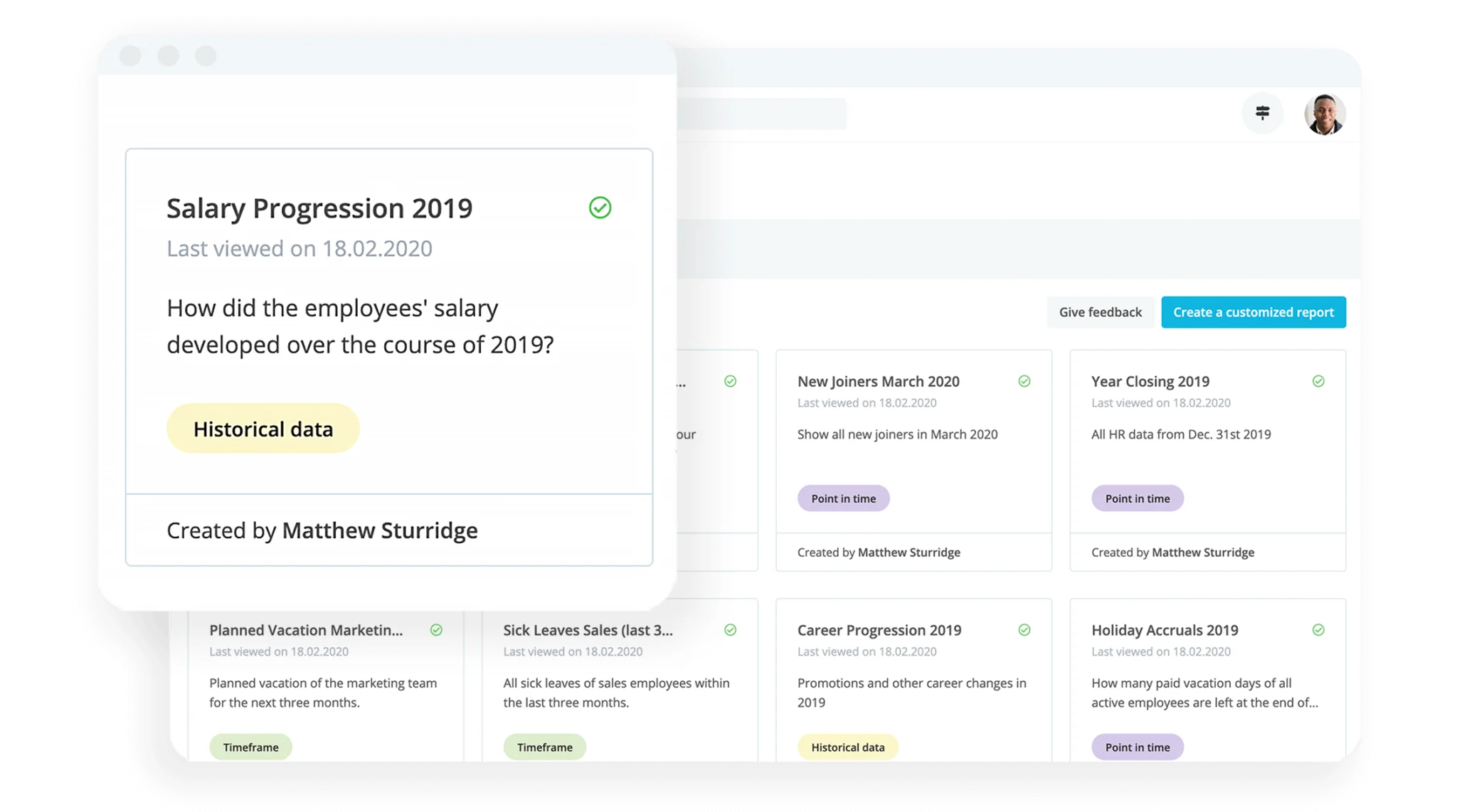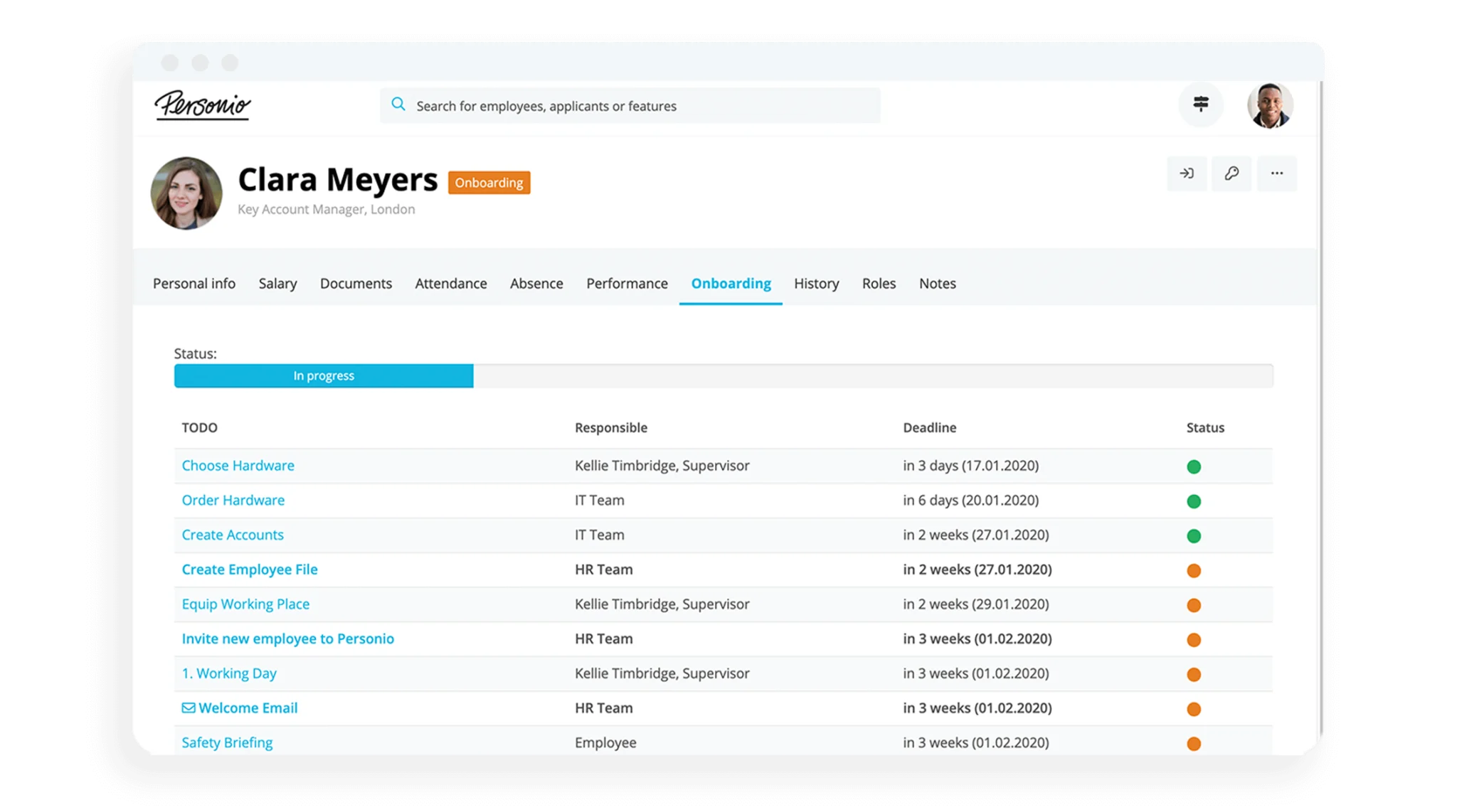Dismissal Letter Template and Writing Guide for HR

Is a dismissal letter always required at work? In this article, we explain the meaning and purpose of a dismissal letter, the most common reasons for employee dismissal as well as some tips and templates to help write your very own.
Key Facts
Dismissal letters are official documents that inform employees of their termination, why they're being terminated and other relevant, helpful information.
The letter verifies that you informed an employee of their dismissal with plenty of notice.
Dismissal letters also include a breakdown of resources available to employees so they can properly plan their next steps.
What Is a Dismissal Letter?
A dismissal letter is formal notice sent to an employee after they’ve been removed from their position. It outlines the reasons for the dismissal, the essential steps they should take next and what benefits or compensation they can still receive.
These are also sometimes called an employee termination letter. Generally, HR professionals are generally responsible for writing and issuing termination or dismissal letters.
Remaining benefits may include any remaining holiday pay and anything else packaged with an employee’s final salary.
The Most Common Reasons for Employee Dismissal
There are several fair reasons for which you can legally dismiss an employee. Although, you should consider alternative options to rectify the situation before taking this route.
Keep in mind: Employee dismissals should never be taken lightly, as they can have a dramatic effect on the employee and can negatively impact your corporate culture.
The most common reasons for dismissal include:
Inability to perform. Where an employee has proven unable to perform to the organisational standards, despite disciplinary or educational measures. For example, someone can be dismissed if they can’t keep up with a change made to their job requirements or if they can’t get along with their colleagues.
Redundant positions. An employee is no longer needed due to circumstances unrelated to the employee’s performance or behaviour. This could include factors like a business closing, a merger, or a reduced need for their work. Before dismissing an employee due to redundancy, it’s good practice to first identify if they can fit elsewhere in the organisation. Additionally, you should be careful using this reasoning because some cases of redundancy can be seen as immediately unjustified, such as firing a pregnant employee.
Continued unlawful employment. If it becomes illegal to maintain an employee’s position, then it’s fair to dismiss them. For example, you can terminate an employee if their right to work has expired or if driving is a vital part of the job and they’ve lost their licence.
Misconduct outside of work. It can be fair to dismiss someone for misconduct outside of work if their behaviour negatively impacts their performance or the organisation’s reputation. These dismissals have become more common with the rise of social media.
Additional substantive reasons. There are reasons beyond the common ones already listed to dismiss an employee. Whether or not citing substantial reasoning for termination is seen as fair usually depends on the exact circumstances.
What Is Important To Include in a Dismissal Letter?
A dismissal letter should be written similarly to typical business correspondence. What you need to write depends on why the employee is being terminated and your company’s policies regarding termination.
No matter the contents, the format should remain the same. Below, we’ve provided the most important things to include…
Dismissal Letter Heading
The header of a termination letter is simple but vital. Include the date, the company's name and contact information, the recipient’s name, and the specific HR representative who penned the letter. Doing so informs the employee whether they were given long enough notice of their termination and who to take it up with if they have further questions.
Greeting and Introduction
Your greeting can colour the employee's initial perception of the letter. It’s best to use a formal greeting in this case because using something informal undercuts the bad news you’re about to deliver.
When you get to the introduction, don’t waste time. Promptly but respectfully inform the employee that their employment is being terminated. Being long-winded here can create unnecessary stress and confusion in an already difficult situation.
Body of the Letter
You can put more details in the body of the letter. Clearly state the reason for the termination while maintaining a professional tone. It’s important to elaborate on your reasoning for dismissing the employee. List facts to back up your claim and evidence to ensure that there’s little to no room for avoiding misinterpretations.
Afterwards, inform the employee about any benefits the company may include in their final salary. That includes any leftover holiday pay, sick leave, redundancy pay and similar benefits. Listing this information helps take the sting out of the situation and shows that they have resources while they search for work.
Finally, remind them of any agreements such as NDAs that they signed at the beginning of their employment that remain active after their termination. And of company property that they will need to return.
Outro
Here, include HR contact information so the employee has the option to appeal the decision (you should also include instructions on how to start the appeal process). And from there, you just need to write the standard sign-off.
Dismissal Letter Template
[Today's date]
[Company name and address]
[HR representative’s name] [Recipient’s name]
Dear [Employee name],
This letter is to inform you that your employment with [Company Name] will be terminated, effective [Termination date or “immediately,” depending on circumstances]. We have come to this decision because [List Reason(s) for Termination]. These issues have persisted despite our best efforts to correct these efforts. Unfortunately, with no options left in the [Disciplinary Process/Employee Development Plan if applicable], we believe this is the best decision for all parties involved.
Following [Date of Termination], you will no longer qualify for [list items like benefits, compensation and entitlements that are only extended to employees]. Any company property in your possession, including [List Valuable Items Provided to the Employee], must be returned to the HR department by [date].
You will continue to receive your agreed-upon wage until [Termination Date], and your final salary will include any unused vacation days and sick leave. In addition, your final compensation will also include the requisite level of redundancy pay. We will send a separate document detailing information on your final payment at a later date.
Remember that you have signed non-disclosure, non-solicitation and non-compete agreements with us that remain in effect after your termination. Whatever information about our business operations, stakeholders, clients and employees that you’ve created and stored must be deleted as soon as possible. You must permanently delete or destroy any confidential material containing company information upon termination.
You are entitled to appeal this decision per our company’s dismissal policies, but you must do so by [Insert Date]. To file an appeal, you must list relevant reasons why you believe it is unfair or in error with corresponding evidence and send this document to [HR Personnel in Charge of Appeals]. Additionally, you can contact [HR Personnel In Charge of Dismissals] if you need clarifications on any part of the proceedings until up to [X] working days after your last day of employment.
[Insert a formal concluding greeting here, such as “we wish you luck.”]
[A signature followed by your typed name and title]
Frequently Asked Questions About Employee Dismissal Letters
What Is a Dismissal Letter?
A dismissal letter is a formal document that details the reasons for an employee's dismissal, evidence showing the dismissal is fair and resources at the employee's disposal to ensure the termination process goes smoothly.
How To Write a Letter of Dismissal
Writing a dismissal letter involves:
Header. Basic information like employee name, company name and date to avoid confusion.
Introduction. Clear and concise announcement of the employee’s dismissal while remaining respectful.
Body. Detail why the employee was dismissed and offer evidence that the decision was made fairly. In addition, you should include the resources the employee will have available after their termination and certain payment information.
Outro. Include the contact information needed if the employee chooses to appeal the dismissal, along with the phone number of general HR support.
Easily Store Important Templates with Personio
There’s a lot to keep track of when presiding over an employee’s termination, from the return of company property and documentation to ensuring an accurate final salary. To help guarantee an efficient termination process, it helps to work with an HR software solution like Personio.
Personio comes with a streamlined offboarding feature that tracks what an HR representative still needs to do before an employee's final day. Book your free demo to speak with an expert and learn how Personio can help you manage your workplace.
Disclaimer
We would like to inform you that the contents of our website (including any legal contributions) are for non-binding informational purposes only and does not in any way constitute legal advice. The content of this information cannot and is not intended to replace individual and binding legal advice from e.g. a lawyer that addresses your specific situation. In this respect, all information provided is without guarantee of correctness, completeness and up-to-dateness.



